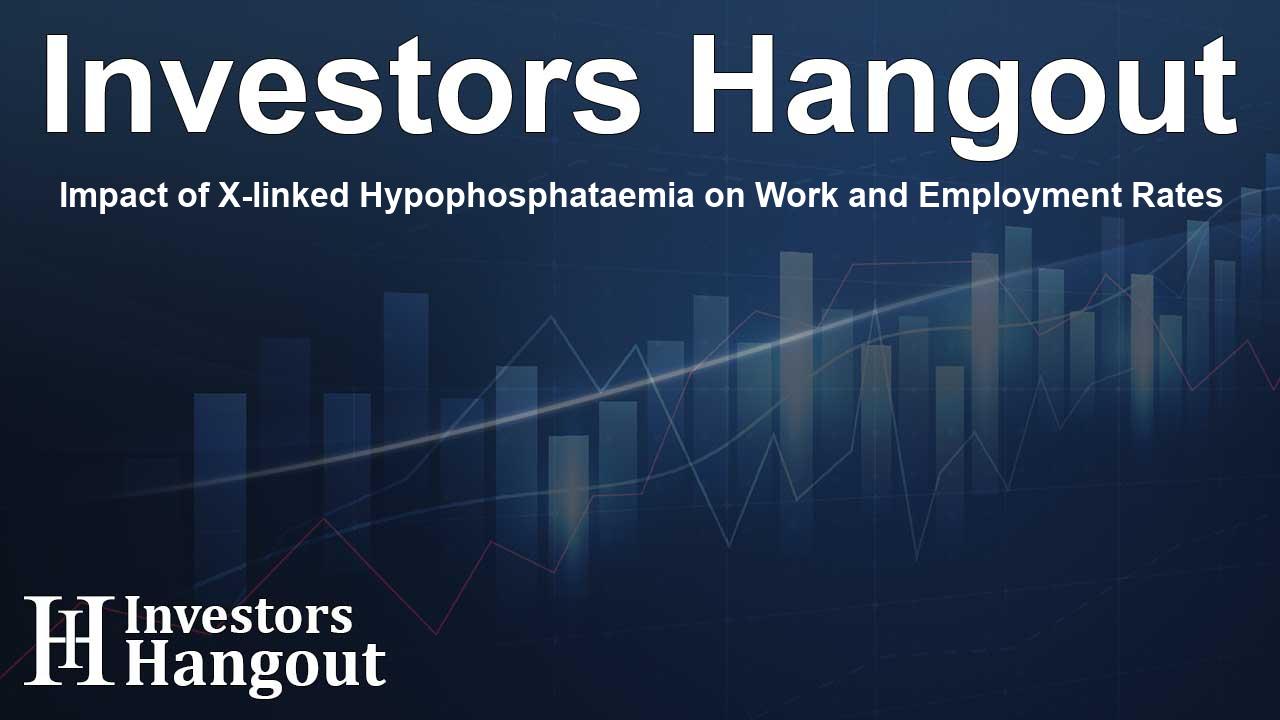Impact of X-linked Hypophosphataemia on Work and Employment Rates

How X-linked Hypophosphataemia Shapes Working Life
X-linked hypophosphataemia (XLH) is a rare genetic condition that reaches into everyday life in very practical ways—how you move, how you feel, and whether you can keep a full-time job. A recent study from Kyowa Kirin International shared stark numbers on employment among adults living with XLH, underscoring the real-world weight of the diagnosis.
Understanding X-linked Hypophosphataemia
XLH is a progressive, phosphate-wasting disorder. Over time, it can cause skeletal deformities, stiffness, and persistent pain. Those symptoms don’t stay in the clinic; they can limit basic physical function and, in turn, disrupt steady employment and long-term career plans.
Study Overview and Key Findings
The findings draw on the XLH Disease Monitoring Program (DMP), an effort that follows both adults and children with XLH across multiple regions. In this analysis, 31% of working-age adults reported being unemployed—about eight times higher than the rate seen in the general United States population. In addition, 15% reported receiving disability payments.
The study also mapped out who faces the steepest barriers. Adults with a history of multiple orthopaedic surgeries and those with more severe physical limitations were much less likely to be employed. Even among those who were working, nearly 60% held less physically demanding roles. Heavier roles frequently proved too taxing and were linked with more reports of pain.
Insights from Medical Experts
Professor Aliya Khan, a leading contributor to the study, emphasized the considerable day-to-day burden of XLH and how it touches every part of life, including work. She stressed that looking at real-world experiences expands understanding beyond clinical endpoints to outcomes that matter to patients—especially the challenges they face in professional settings. That perspective helps shape care plans that are practical and supportive.
Why Disease Monitoring Matters
The XLH DMP takes a modern approach to understanding a chronic condition over time. Unlike traditional registries, it fosters collaboration and tracks how the disease shows up and changes. It includes people regardless of the treatments they’ve received, building a fuller picture of XLH that can surface patterns and needs that might otherwise be missed.
Commitment to Real-World Evidence
Kyowa Kirin continues to focus on real-world evidence that reflects the lived experience of people with XLH. Ben Johnson, Director of Global Health Economics and Outcomes Research at Kyowa Kirin, noted plans to share more results from the ongoing DMP at an upcoming conference. This kind of evidence helps patients and clinicians understand how treatments perform outside tightly controlled studies, where life is more complicated—and more honest.
About the XLH Disease Monitoring Program
The XLH DMP is a long-term, internationally recognized study designed to track disease characteristics, presentation, and how they change over time. A diverse steering committee—clinical experts and patient advocates together—guides the effort. The goal is twofold: map the course of the disease and capture how it shapes the lives of people who live with it.
Managing XLH: What Care Often Requires
Because XLH can involve many systems and symptoms—including joint pain and oral health concerns—care usually benefits from a multifaceted plan and an interdisciplinary team. At its root, XLH is linked to the protein FGF23 and leads to low phosphate levels, or hypophosphataemia. Addressing symptoms while aiming to improve quality of life remains a core priority for healthcare providers worldwide. The work is steady and practical, focused on what helps a person function—day by day.
Frequently Asked Questions
What is X-linked hypophosphataemia (XLH)?
XLH is a rare genetic disorder marked by phosphate wasting. Over time, it can lead to skeletal deformities, stiffness, bone pain, and other physical limitations that affect daily life.
How common is unemployment among adults with XLH?
In the study referenced here, 31% of working-age adults with XLH were unemployed—about eight times the rate seen in the general United States population.
What workplace challenges are common for adults with XLH?
Many adults with XLH face physical limits that make heavier roles difficult to sustain. Nearly 60% of those employed worked in less physically demanding positions, and heavier work was associated with higher reports of pain.
What is the XLH Disease Monitoring Program (DMP)?
The XLH DMP is a long-term observational program that tracks health status, disease characteristics, and changes over time in people living with XLH, regardless of prior treatment.
How is Kyowa Kirin involved in XLH research?
Kyowa Kirin conducts and shares real-world research on the XLH experience. The company plans to present additional DMP findings at an upcoming conference to inform care and decision-making for patients and clinicians.
About The Author
Contact Olivia Taylor privately here. Or send an email with ATTN: Olivia Taylor as the subject to contact@investorshangout.com.
About Investors Hangout
Investors Hangout is a leading online stock forum for financial discussion and learning, offering a wide range of free tools and resources. It draws in traders of all levels, who exchange market knowledge, investigate trading tactics, and keep an eye on industry developments in real time. Featuring financial articles, stock message boards, quotes, charts, company profiles, and live news updates. Through cooperative learning and a wealth of informational resources, it helps users from novices creating their first portfolios to experts honing their techniques. Join Investors Hangout today: https://investorshangout.com/
The content of this article is based on factual, publicly available information and does not represent legal, financial, or investment advice. Investors Hangout does not offer financial advice, and the author is not a licensed financial advisor. Consult a qualified advisor before making any financial or investment decisions based on this article. This article should not be considered advice to purchase, sell, or hold any securities or other investments. If any of the material provided here is inaccurate, please contact us for corrections.
